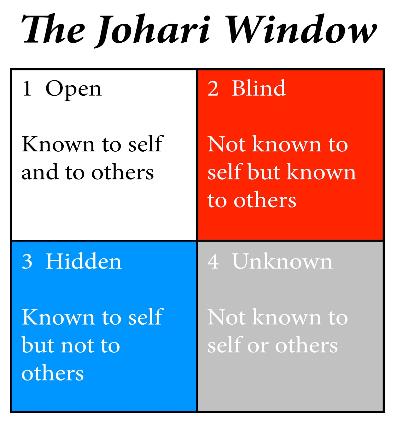Author: McGee – Agile Coach
(These statements are strictly personal and are not those of any Company or Organization)
I remember a number of years ago I was at home and my family were all laughing and joking about one of my brothers about his night out on the town. It was great fun and of course I was probably going a little over the top and enjoying the event a little too much. My dad, who was always a very silent man, disappeared for a few minutes and returned with a mirror. He handed it to me and said that I should have a good long look at myself and think of my own past performances before laughing at my brother! I often think of that moment, maybe that was the start of my self-awareness journey!
Any of you who have been patient enough to read my recent blogs will have noticed a familiar theme – I mainly talk about self-awareness. Every blog is meant to stimulate something inside us to reflect and think about ourselves. For me, self-awareness is critical to working in the digital age. More and more we are working together as teams, we are striving for collaboration and breaking out of our silos. Being aware of the impact our behaviour, attitude and actions have on those around us is critical to success.
A very useful tool to keep track of how self-aware we are is the Johari window.

The “Open” quadrant is what you openly share with everyone else. It represents things about yourself that you and others know about you. For example, those working with me know I am a product manager, am passionate about flow metrics (they had to be mentioned sooner or later), and my wife picks my clothes!
The “Hidden” quadrant is more personal. These are things you choose not to share and are known only to you. The size of these two quadrants varies depending on your relationship with a person. The closer you are to a person, the more you tend to share so your open quadrant becomes bigger and the hidden quadrant becomes smaller. This takes time and for some people it requires high levels of trust. In a team setting we can increase the size of our open quadrant by sharing more about our lives with each other in team building activities.@ Caroline Smith, has recently joined our team and has arranged these sessions every Friday when the team is having tea! Caroline can share some of the activities that we have run. One of our team members use to be a plumber, another spent time working on a tug boat, another use to sing songs on the street for money and one person jumped from a moving taxi whilst being threatened with a knife! This kind of sharing deepens our understanding and brings us closer as a team. Some people find this very difficult and chose not to participate – and that is fine. My wife is a very guarded person and would find this very difficult. A word of warning, try not to over share – not everyone is interested in your before and after pictures from the gym – trust me!
The “Blind” quadrant is perhaps the most interesting one. This represents things about ourselves that others know but we are totally unaware of. I talked about these blind spots in the feedback blog. I am sure I have annoying habits, or sayings that I would like to know about so I could fix them. Our goal should be to become more self-aware and find these blind spots. We want to make this quadrant as small as possible.
Close friends and family will tell you very quickly about your blind spots. My wife would tell me if I had a piece of broccoli stuck in my teeth! My brother, the guy we were joking about at the start of this blog, has a different story. Years ago he spent a whole night “dancing at the disco” and ended up coming home alone only to find that infamous piece of broccoli stuck between his teeth. It would have been nice if one of the first girls he was dancing with would have told him.
It is mainly by sharing and disclosing more about ourselves that we become more approachable and create the environment where people can provide us with feedback and help us discover our blind spots. Sharing your stories and becoming more than just your “a-number” is a step in the right direction. Even a small amount of sharing will encourage people to tell you if you are having a broccoli moment, you need to share a little more if you want deeper, more meaningful feedback.
Finally, let’s look at the “unknown” quadrant. These are things that we don’t know about ourselves, and others don’t know about us. I could be a grand master at chess, a fantastic scrum master, a brilliant artist or whatever – but I never tried!
This quadrant can be minimized by adopting a growth mindset. Having belief in ourselves, being brave to try new things and pushing ourselves outside our comfort zones. This is where the magic could happen.
As an exercise, create your own Johari window. How big are your quadrants? How much do you choose to share, how much feedback do you regularly receive, when was the last time you tried something new?
Now that you are more self-aware you can choose how big you would like to make these quadrants. You have the tools and the awareness to change! Good Luck!


I have been using the Johari window for years with my clients. It worked for me when I learned about it in a debate class at JC. I’m still surprise how little some professionals know about this magnificent tool.